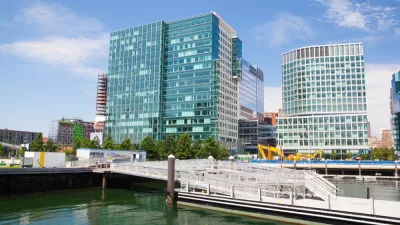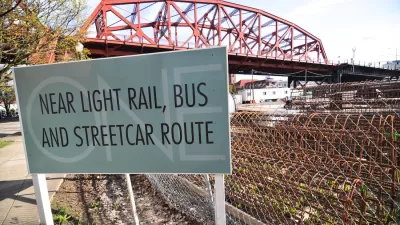Boston, like other cities around the country, suffers from a housing shortage. Initial micro-apartment developments met plenty of demand, but whether the model is a panacea for the city’s housing shortage is still in question.
Asthma Khalid examines the initial response to micro-apartments by residents of the city of Boston. The initial market for the apartments was brisk, but additional units have been slow to materialize.
Khalid quotes several knowledgeable sources in the story. First is Tom Acitelli, founding editor of the real estate blog Curbed Boston: “They got them in New York, they got them in San Francisco, they got them in Seattle. They can work here. And this sort of panacea approach that’s been offered, that they are the 21st-century solution to a city like Boston’s housing crunch is ridiculous.”
Kairos Shen, director of planning at the Boston Redevelopment Authority, also expresses hesitation that the model could solve the city’s housing shortage, but also described the units as popular among developers: “We now have lots of developers who want to develop these small units, and they’re thinking about creating micro-units, not innovation units, per se, to maximize the yield of the units that they’re able to get in a development.”
FULL STORY: Micro-Apartments: Boston’s Housing Solution Or Developers’ Cash Cow?

Study: Maui’s Plan to Convert Vacation Rentals to Long-Term Housing Could Cause Nearly $1 Billion Economic Loss
The plan would reduce visitor accommodation by 25,% resulting in 1,900 jobs lost.

North Texas Transit Leaders Tout Benefits of TOD for Growing Region
At a summit focused on transit-oriented development, policymakers discussed how North Texas’ expanded light rail system can serve as a tool for economic growth.

Why Should We Subsidize Public Transportation?
Many public transit agencies face financial stress due to rising costs, declining fare revenue, and declining subsidies. Transit advocates must provide a strong business case for increasing public transit funding.

How to Make US Trains Faster
Changes to boarding platforms and a switch to electric trains could improve U.S. passenger rail service without the added cost of high-speed rail.

Columbia’s Revitalized ‘Loop’ Is a Hub for Local Entrepreneurs
A focus on small businesses is helping a commercial corridor in Columbia, Missouri thrive.

Invasive Insect Threatens Minnesota’s Ash Forests
The Emerald Ash Borer is a rapidly spreading invasive pest threatening Minnesota’s ash trees, and homeowners are encouraged to plant diverse replacement species, avoid moving ash firewood, and monitor for signs of infestation.
Urban Design for Planners 1: Software Tools
This six-course series explores essential urban design concepts using open source software and equips planners with the tools they need to participate fully in the urban design process.
Planning for Universal Design
Learn the tools for implementing Universal Design in planning regulations.
Ascent Environmental
Borough of Carlisle
Institute for Housing and Urban Development Studies (IHS)
City of Grandview
Harvard GSD Executive Education
Toledo-Lucas County Plan Commissions
Salt Lake City
NYU Wagner Graduate School of Public Service





























